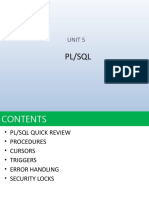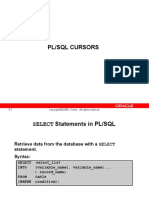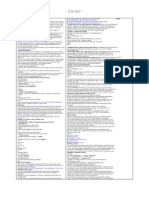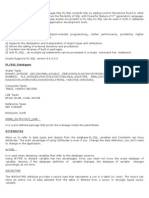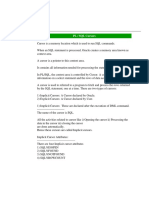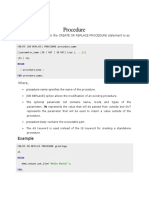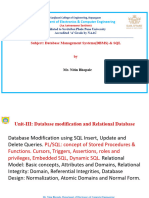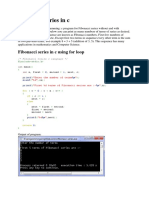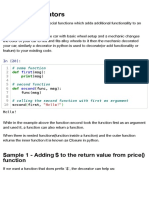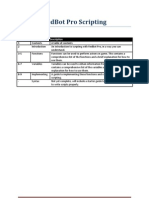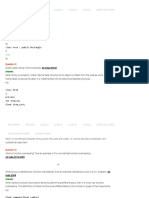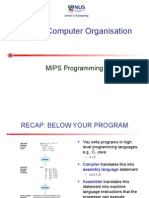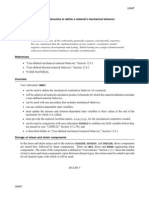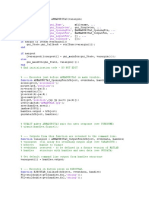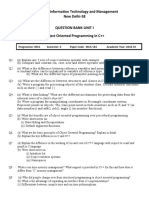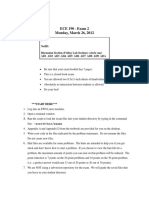0% found this document useful (0 votes)
209 views52 pagesProgramming in Oracle With PL/SQL: Procedural Language Extension To SQL
PL/SQL allows using programming tools like loops and conditions with SQL. Code is organized into blocks like anonymous and named blocks. Anonymous blocks contain executable code that can be run immediately, while named blocks are procedures and functions. Variables can be declared within blocks and assigned data types. Cursors are used to iterate over query results and fetch rows into record variables for processing.
Uploaded by
enassedkiCopyright
© Attribution Non-Commercial (BY-NC)
We take content rights seriously. If you suspect this is your content, claim it here.
Available Formats
Download as PPT, PDF, TXT or read online on Scribd
0% found this document useful (0 votes)
209 views52 pagesProgramming in Oracle With PL/SQL: Procedural Language Extension To SQL
PL/SQL allows using programming tools like loops and conditions with SQL. Code is organized into blocks like anonymous and named blocks. Anonymous blocks contain executable code that can be run immediately, while named blocks are procedures and functions. Variables can be declared within blocks and assigned data types. Cursors are used to iterate over query results and fetch rows into record variables for processing.
Uploaded by
enassedkiCopyright
© Attribution Non-Commercial (BY-NC)
We take content rights seriously. If you suspect this is your content, claim it here.
Available Formats
Download as PPT, PDF, TXT or read online on Scribd
/ 52








